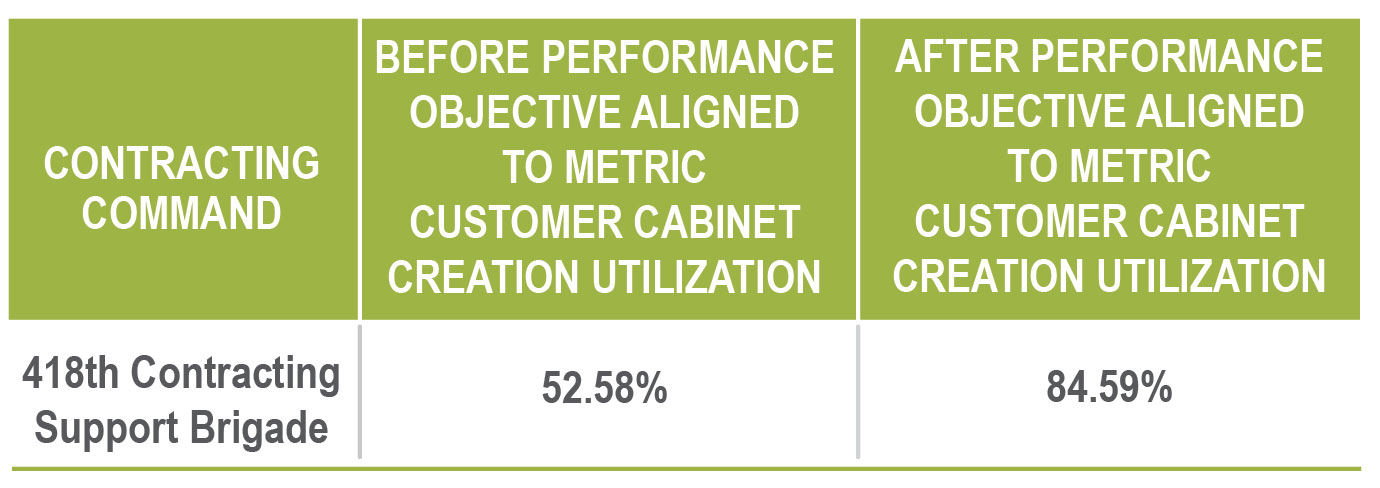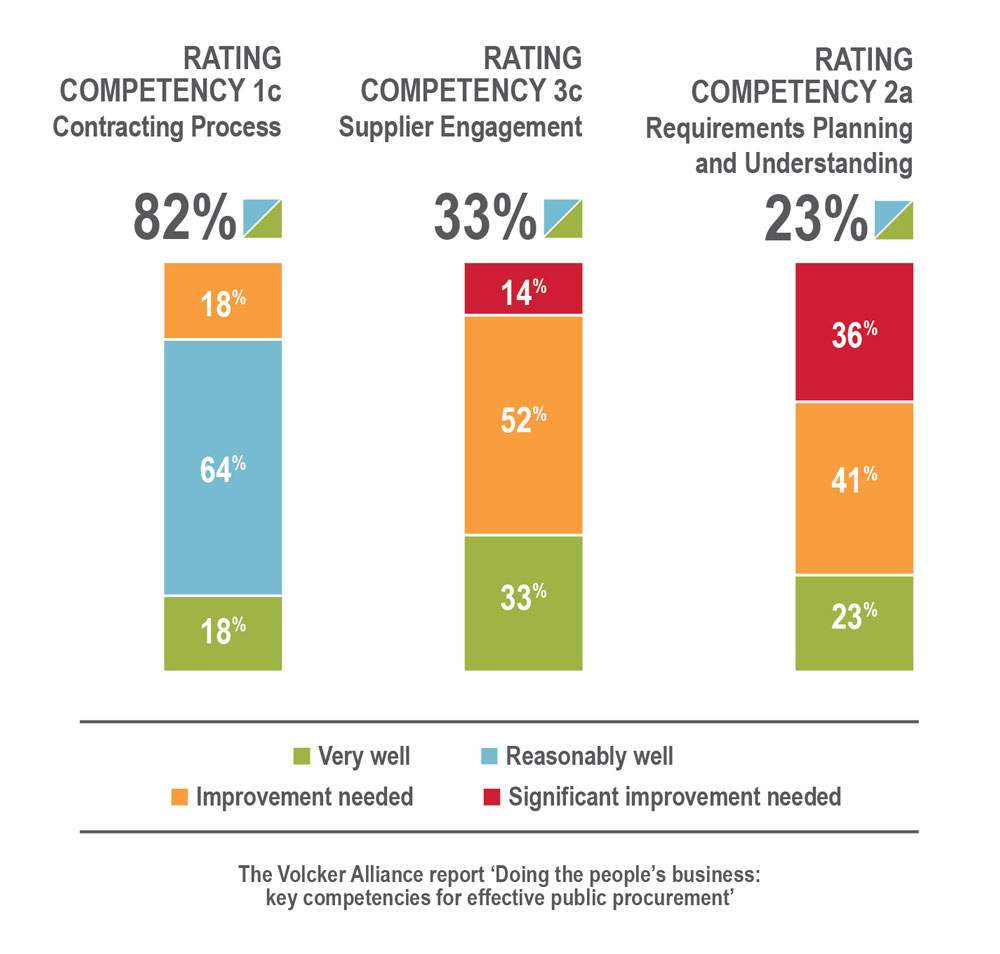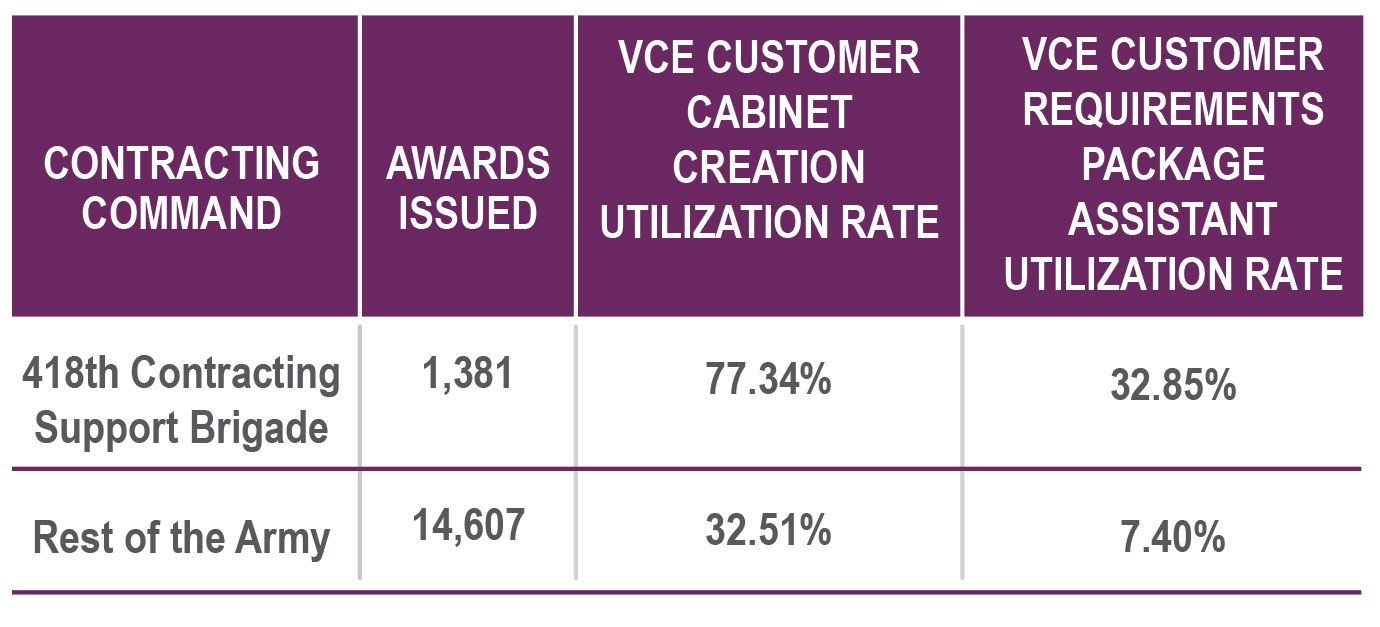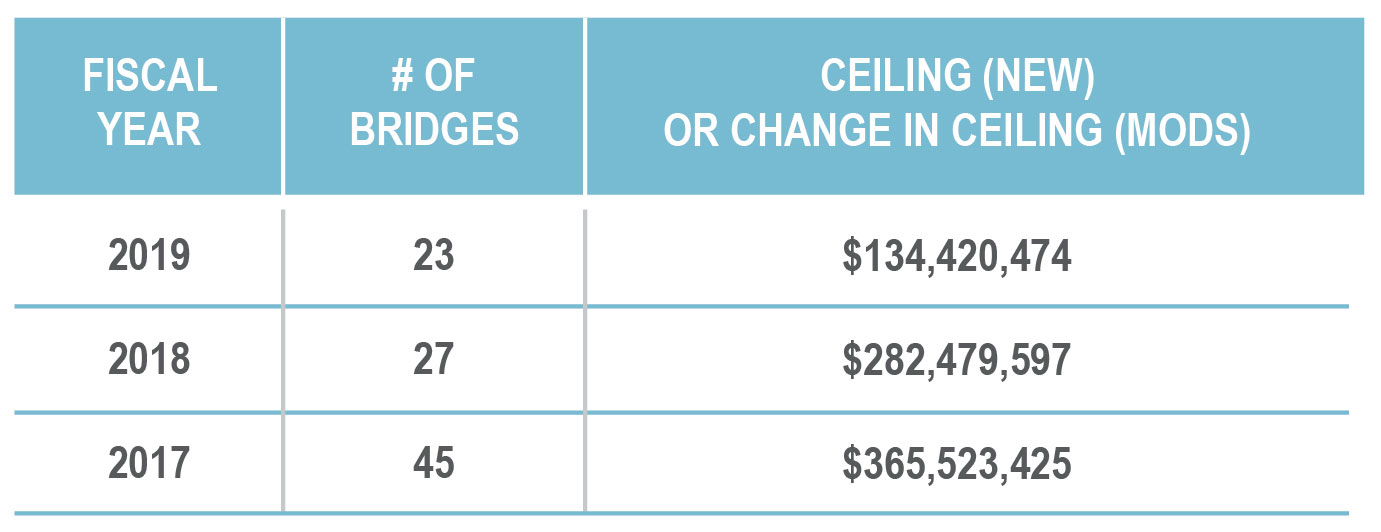
ENGAGING THE STAKEHOLDER: The 418th CSB was able to identify delays in the acquisition process that could trigger a bridging action by measuring what matters—early and integrated planning with requiring activity partners. (Image by Getty Images)
Improving stakeholder engagement helped the 418th CSB advance the way they do business.
by Jim Clift
In contracting, there is often an imbalance between the less complicated, more comfortable tasks related to contract compliance and the murkier, less straightforward and more challenging tasks associated with stakeholder—customer, warfighter and requiring activity—engagement. The 418th Contracting Support Brigade (CSB) managed to improve stakeholder engagement and saved the government money by reducing the number of noncompetitive contract extensions, known as bridging actions, from fiscal year 2017 to 2019.

REDUCTION IN BRIDGE ACTIONS: The 418th CSB reduced the number of noncompetitive contract extensions from fiscal year 2017 to 2019.
Warfighter commands must make tough spending choices in the pursuit of maintaining readiness. Not only are bridging actions costly, but they also require contracting professionals to devote time working on both the follow-on contract and the bridging action. While bridge contracts can be necessary tools, the 418th CSB and their requirement activity partners over relied on them, mostly due to contractor protests, delays in requirements planning and source selection delays and unexpected expansion of requirements.
It was apparent to the 418th CSB leadership that an improvement in stakeholder engagement during the requirements planning phase would translate to an improvement in reducing bridge contracts.
Coincidently, a 2016 Volcker Alliance survey asked 38 government procurement leaders to examine core competencies of the contracting workforce. Procurement leaders rated stakeholder engagement and requirements planning as poor when compared with the contracting workforce’s ability to follow contracting processes. This only reinforced the 418th CSB’s commitment to change.

PROCUREMENT COMPETENCY MODEL: Procurement leaders rated stakeholder engagement and requirements planning as poor when compared with the contracting workforce’s ability to follow contracting processes.
Up until this point, the 418th CSB received customer requirements piecemeal through email and a point-to-point transmittal of only the purchase request from the customer’s accounting system to the contract writing system. VCE tied these piecemeal messages together through its platform, where both customer and contracting could virtually plan acquisitions and track key milestone events.
MEASURING WHAT MATTERS
A 2016 Government Accountability Office (GAO) report titled “Sole Source Contracting: Defining and Tracking Bridge Contracts Would Help Agencies Manage Their Use” found that of the 73 delays in bridge contracts reviewed, 62 were due to late acquisition planning documents and source selections. The report further noted that “bridge contracts occur when a delay in the acquisition process prevents the award of a competitive follow-on contract until after the contract in place is due to expire.”
Similar to the GAO scope, the 418th CSB, from fiscal year 2018 to the current fiscal year, found that 31 of 62 bridge contracts were linked to late acquisition planning documents and source selections delays. Determining the number of bridges was only possible because of the VCE system. Beginning in October, 2017, Army contracting activities could track both the number of and reasons for bridging contracts because the Program Executive Office for Enterprise Information Systems and the Office of the Deputy Assistant Secretary of the Army (Procurement) worked in concert to develop a mechanism through the Business Intelligence module in VCE that captured bridge information. These lagging metric VCE reports, which recorded what had already happened, allowed subordinate organizations like the 418th CSB to create leading metrics to improve organizational goals.
Leading metrics, on the other hand, measure events prior to completion and drive the behavior required to improve organizational goals. In other words, leading measures improve lagging organizational goal metrics. The 418th CSB created two leading metrics that were sent out to the workforce each week. Both tracked whether the customer and contracting professional did their part in using the VCE customer involvement tools. As Figure 3 details, the 418th CSB far exceeded the rest of the Army in meeting customer involvement goals. By measuring what matters—early and integrated planning with our requiring activity partners—the 418th CSB identified delays in the acquisition process that could potentially trigger a bridging action.

CUSTOMER INTEGRATION OUTCOMES: The 418th CSB far exceeded the rest of the Army in meeting customer involvement goals. By measuring what matters, brigade identified delays in the acquisition process that could potentially trigger a bridging action.
LEADERSHIP MATTERS
When Gen. Gustave “Gus” Perna assumed command of Army Material Command in September 2016, he brought with him the concept of “operationalizing” his command. Perna defined operationalizing as a “process requiring vision, time and resources. An understanding, knowledge and appreciation of the capabilities of organizations across the Army, and the best methods and approaches of synchronizing and coordinating across those capabilities to achieve objectives.”
As effective subordinate units are inclined to do, the Army Contracting Command operationalized their own contracting support vision with Perna’s. This nesting effect continued through the Mission and Installation Contracting Command to the 418th CSB.
In order to manage operationalizing 418th CSB’s goals of timely contracting support, the brigade commander and deputy to the commander established the Customer and Field Support Division. At its core, the division’s mandate was to assist acquisition teams in navigating the time consuming procurement process, foster a collaborative environment and identify solutions to roadblocks that clearly exceed the costs to administer and enforce.

OPERATIONALIZE CONTRACTING: The 418th CSB’s commander and deputy to the commander established the Customer and Field Support Division. This division assists acquisition teams in navigating through the time consuming procurement process, foster a collaborative environment and identify solutions to roadblocks.
Parallel to the 418th CSBs efforts, senior Army leaders began pushing for stronger acquisition teaming efforts. The Army vice chief of staff published a memo directing requiring activities to use VCE. The Army Federal Acquisition Regulation Supplement Subpart 5104.802(f)(i)(5) directed contracting offices to assist their requiring activities in using VCE.
Both the Mission and Installation Contracting Command and Army Contracting Command published strategic objectives to operationalize contracting by integrating contracting and customer milestones. Each of these leadership directives allowed the 418th to advocate for, promote the use of, and train acquisition teams on VCE.
Operationalizing contracting also meant leadership taking a vested interest in demonstrating a clear relationship between early stakeholder engagement and its effect on reducing bridging contracts. The Office of the Deputy Assistant Secretary of the Army (Procurement) developed Army level policies to manage and track bridge contracts. These policies empowered competition advocates to adopt new initiatives, which increased competition and allowed for further analysis to target improvements across the command. Special recognition is reserved for the competition advocate at Mission and Installation Contracting Command Headquarters, Scott Kukes, for working tirelessly to validate bridging data inputted to VCE. Increased accuracy gave the 418th CSB a better picture of the relationship between the delay in the follow-on contract and the current extension or standalone bridge.
SHARED AUTOMATION MATTERS
A “stovepiped system” is a term for a system that has the potential to share data or functionality with other systems but which does not do so. Before VCE, the Army was unable to share an entire requirements package for complex, high cost services. This was because of two stovepiped systems, the General Fund Enterprise Business System on the customer side of the fence, and the Procurement Desktop-Defense contracting system on the other. With VCE, a readymade tool now existed that shared the entire requirements package with both the customer and contracting.
To organizations like the 418th CSB, VCE provided the sharing tool needed to capitalize on improving stakeholder engagement. In the fall of 2018, the command implemented an awareness and training campaign to promote the use of VCE with the goal of deploying its customer integration tools by January 2019. In all, the 418th executed eight separate virtual training sessions to over 500 customer and contracting VCE users.

FINDING THE BALANCE: The 418th CSB wanted to balance the tasks associated with stakeholder engagement and contract compliance-oriented tasks. Better engagement with customers meant replacing outdated manual processes with the automated VCE tool. (Source: Getty Images/NiseriN)
CONCLUSION
Improving stakeholder engagement and reducing bridge contracts are a culmination of the efforts of the dedicated military and civilian workforce of the 418th CSB. Their commitment to accomplishing the mission and adapting to new ways of thinking created a sense of pride throughout the organization. In closing, prioritizing stakeholder engagement tasks by creating a brigade Customer and Field Division and using VCE customer integration tools had the intended effect of helping the 418th CSB decrease their number of bridging contracts. Between fiscal year 2017 and 2019, the brigade observed an almost 50 percent reduction in the number of bridging actions and a 63 percent decrease in dollars obligated towards bridges (See Figure 1). Of course, many other factors led to the brigade’s reduction in bridging actions, including a proactive competition advocate and dedicated acquisition team members armed with leadership resolve. Changing course is difficult, but the 418th CSB proved that committed leadership aligned to people and processes, and coupled with an automated tool, can fundamentally improve outcomes.
For more information, contact Jim Clift at james.l.clift.civ@mail.mil.
JIM CLIFT is the supervisory procurement analyst for the 418th Contracting Support Brigade’s Customer and Field Support Division, Mission and Installation Contracting Command at Fort Hood, Texas and is a member of the U.S Army Acquisition Corps. He graduated from the Army ROTC program at Southwest Texas State University with a B.S. in Geography, was commissioned in the Air Defense Artillery Corps in 1995, and then retired and began his federal civilian career in 2015. His advanced military education includes the Command and General Staff College and a Master’s in Business Administration from Texas A&M-Central Texas.
This article is published in the Summer 2020 issue of Army AL&T magazine.
Subscribe to Army AL&T News – the premier online news source for the Army Acquisition Workforce.
![]() Subscribe
Subscribe







